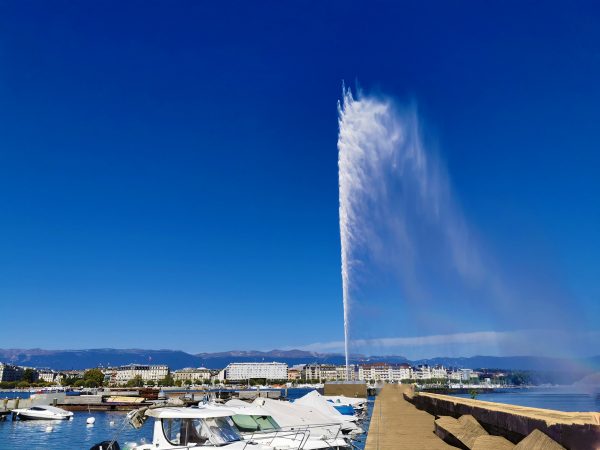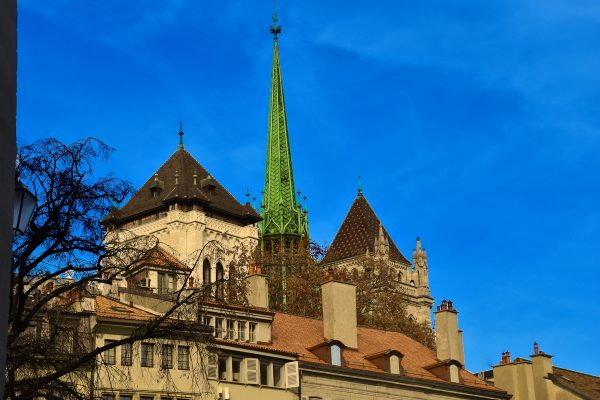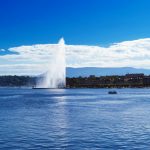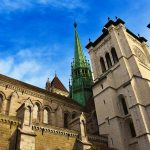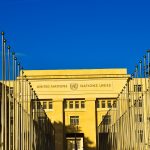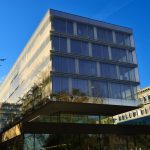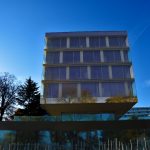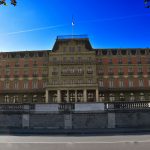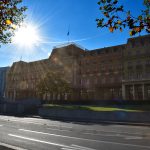A bord du Greta, naviguez dans la rade de Genève et admirez de près le Jet d'eau
1. Pierre du Niton
Les pierres du Niton sont deux rochers situés dans le lac Léman dans les rives de Genève.On suppose qu’à l’âge du bronze, les pierres du Niton ont eu un rôle rituel et spirituel. La pierre du Niton sert de base à toute l’hypsométrie suisse. L’ingénieur Guillaume-Henri Dufour constate que ces pierres sont très stables et en 1820, s’en sert pour fixer le niveau moyen du lac et appose une plaque graduée sur la grande pierre comme point de repère.
3. Cathedral St Peter's
Construite au XIIe siècle, la Cathédrale Saint-Pierre a connu d’importantes transformations. Sous la Réforme, elle devient un lieu de culte protestant. Vous pouvez monter les 157 marches qui mènent au sommet des tours ou vous trouverez un incroyable panorama de 360° sur la ville et le lac. Situé sous la Cathédrale, se trouve un lieu archéologique où vous découvrirez des trésors datant de l’Antiquité.
4. Park Grange
La parc La Grange est classé monument historique. Le site témoigne de présence humaine déjà au Néolithique. Au XVIIIe siècle le domaine agricole prend le nom de La Grange; alors propriété de la famille Lullin, ceux-ci construisent la villa de maître en 1768 et aménagent un jardin à la française. Les Favre leur succèdent, transforment la maison, le parc et construisent notamment l’entrée monumentale côté quai Gustave-Ador avec ses lions, la pergola, l’orangerie et en 1821 la superbe bibliothèque . En 1945 est aménagé au bas du parc, au soleil et à l’abri des vents, la grande Roseraie qui a donné lieu au Concours international de roses nouvelles de Genève.
5. Park Eaux Vives
Le nom d’«Eaux-Vives» vient des nombreuses sources et autres ruisseaux du secteur (coulant aujourd’hui sous les parcs et les routes, dans des canalisations) qui alimentaient la ville en eau potable. L’une de ces sources était située au centre du parc, là où coule une cascade au milieu de la rocaille et de ses plantes alpines.Le parc offre une variété d’arbres magnifiques: sapins, pins et autres séquoias impressionnants valent à eux seuls le déplacement. Des vastes massifs de rhododendrons et d’azalées complètent l’enchantement au printemps.
6. Baby Plage
En plein cœur de Geneve, au bord du lac, Baby plage, permet aux enfants de pouvoir jouer en toute sécurité, tandis que les parents profitent d’un paysage magnifique. On trouve autours, des marchands de glaces, des cafés offrant une vue dégagée sur le lac et de nombreuses activités comme naviguer sur le lac.
7. Black Port Monument
Le 1er juin 1814 au Port-Noir constitue une date historique pour le canton de Genève. Les premières troupes Confédérées constituées d’environ 300 soldats fribourgeois et soleurois débarquent au Port-Noir, situé au débouché de la rampe de Cologny. La colonne de pierre et la statue de Genève et Helvetia au Port Noir commémorent l’intégration de Genève dans la Confédération Hélvètique, après l’atterrissage de deux contingents suisses le 1er Juin 1814.
8. Yault Club
Le Yacht Club de Genève est un club de voile basé à Genève, sur les rives du Lac Léman depuis 1886. Sa mission est simple: développer la pratique de la voile. Le Yacht Club de Genève organise pas moins de 10 manifestations véliques tout au long de la saison dont la célèbre Genève-Rolle-Genève
9. Cologny
Avec son coteau surplombant le lac Léman et ses institutions prestigieuses, la commune genevoise attire les grandes fortunes de la planète.
10. Frankenstein creation house
Lorem ipsum dolor sit amet, consectetur adipiscing elit. Ut elit tellus, luctus nec ullamcorper mattis, pulvinar dapibus leo.
11. Villa Diodati
Durant ce terrible été 1816, Lord Byron, venu d’Angleterre, loue la Villa Diodati, il passe de nombreux jours et nuits avec ses amis, parmi lesquels John William Polidori, Claire Clairmont, Percy Bysshe Shelley et Mary Shelley.
Influencés par le climat apocalyptique et les catastrophes sociales, les amis ont commencé à échanger des idées sur l’occultisme et la philosophie. Lord Byron les a également encouragés à s’essayer à l’écriture d’histoires d’horreur pour passer le temps et refléter l’humeur des jours sombres. Certains de ces récits macabres ont plus tard été transformés en célèbres romans de fiction.
La toute première ébauche du manuscrit du Frankenstein de Mary Shelley : or, The Modern Prometheus a été écrite à l’intérieur de la Villa Diodati. L’auteur a écrit ce livre alors qu’elle n’avait que 18 ans. Il a été publié en 1818. Au cours de ce terrible été, Byron et Polidori ont également commencé à travailler sur Le Vampyre, le premier ouvrage lié au paradigme romantique des romans de vampires
12. Château d'if
Un charmant restaurant au bord du lac Leman. Un cadre rustique et une bonne fondue, onctueuse à souhait, pour passer un moment en toute authenticité.
13. Mont-Blanc, Alps Mountains
Les Alpes sont une chaîne de montagnes qui s’étend en Europe , recouvrant la frontière nord de l’ Italie, le Sud-Est de la France, Monaco, la Suisse, le Liechtenstein, l’Autriche, le Sud de l’ Allemagne et la Slovénie .
Les Alpes culminent à 4 809 mètres, au sommet du mont Blanc .
14. Saussire-Eisenhower House
Le Sommet de Genève de 1985 était une réunion sur la guerre froide à Genève , en Suisse. Elle s’est tenue les 19 et 20 novembre 1985 entre le président américain Ronald Reagan et le secrétaire général soviétique Mikhail Gorbatchev . Les deux dirigeants se sont rencontrés pour la première fois pour s’entretenir sur les relations diplomatiques internationales et la course aux armements.
15. Josephine's Villa
Lorem ipsum dolor sit amet, consectetur adipiscing elit. Ut elit tellus, luctus nec ullamcorper mattis, pulvinar dapibus leo.
16. Rothschild's Castle
Adolphe Carl de Rothschild (1823-1900) achète le domaine de Pregny près du lac Léman en 1857. Le parc de Pregny a été repensé sous l’influence de la femme d’Adolphe, Julie, qui a introduit des animaux sauvages et des oiseaux tropicaux. La famille Rothschild est bien connue pour son engagement dans de nombreux domaines du savoir et de la culture: l’une des manifestations de cette implication est la diversité et la quantité de leurs publications.
17. UN Building
L’Organisation des Nations Unies est une organisation internationale fondée en 1945. Aujourd’hui, elle compte 193 États Membres. La mission et le travail des Nations Unies sont guidés par les objectifs et principes énoncés par sa Charte fondatrice. été dotée par ses membres fondateurs d’un objectif prioritaire : le maintien de la paix et de la sécurité.
18. WTO: World Trade Organisation
Centre William Rappard, qui abrite l’Organisation mondiale du commerce. Témoin de plus de 90 ans de coopération internationale, le Centre William Rappard (CWR) a été conçu dans le cadre de l’effort déployé après la Première Guerre mondiale pour créer une Société des Nations et d’autres institutions qui auraient pour rôle d’encourager la coopération multilatérale et le règlement pacifique des conflits.
19. Botanical Garden
Immense espace de nature, grand de 28 hectares, le Jardin botanique de Genève est un véritable havre de paix. Il offre une tranquillité et une beauté propre à la promenade. D’autre part, depuis sa création en 1904, le Jardin Botanique a développé une flore incroyablement riche et variée, avec sa collection de 16 000 espèces venant du monde entier. La visite se fait à travers divers secteurs : l’arboretum, les serres, l’espace animalier.
20. Perle du Lac
La Perle du lac est l’un des parcs les plus richement arborisé de Genève.Le restaurant La Perle du Lac s’affirme dans un style traditionnel qui plonge sa clientèle dans une ambiance chaleureuse et douillette.
21. Villa Bertholoni
Une villa romaine et des thermes, découverts en 1926, témoignent que le site est apprécié depuis au moins 2000 ans! La Villa Bartholoni qui accueille aujourd’hui le Musée d’histoire des sciences est édifiée en 1825 en style florentin par le banquier et mécène François Bartholoni.
22. Henry-Dunant Institut
Depuis sa création, l’Institut s’est essentiellement consacré à la recherche et à la formation dans les principaux domaines d’activité du Mouvement.



